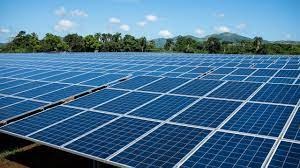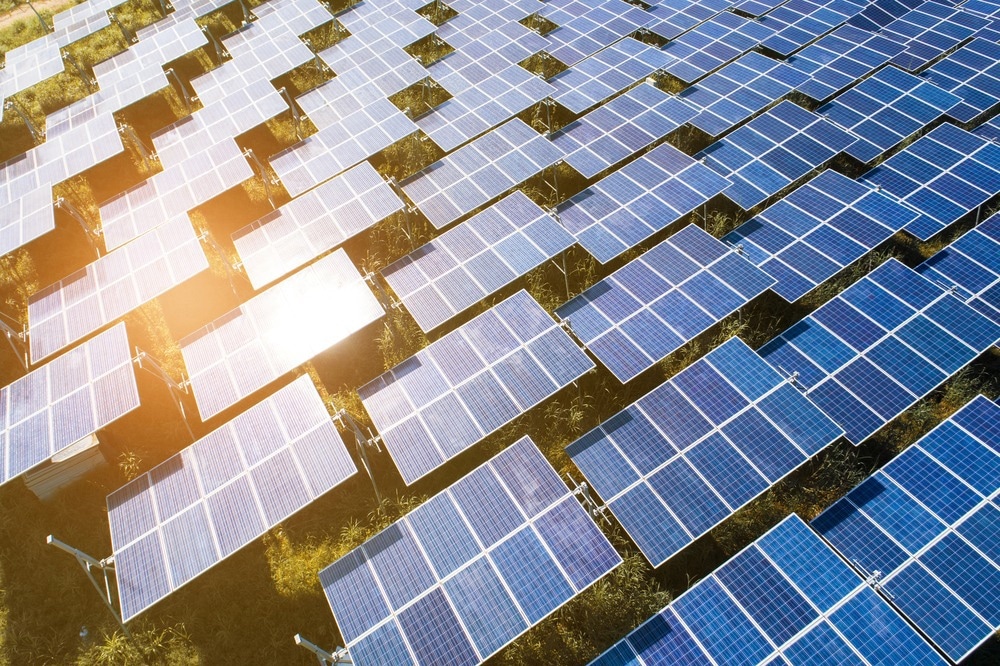Solar energy is a renewable energy source that is gaining popularity and for good reason. Solar electric system use photovoltaic (PV) cells to convert sunlight into electricity. It can supply energy to buildings, companies, and even entire cities. But how exactly does this process work? In this post, we'll dive into the science behind solar electric systems. Also, explain how sunlight is transformed into usable electricity.
The Components of a Solar Electric System
Before we delve into how solar electric systems work, it's important to understand the main components of these systems. A typical solar electric system consists of three main components: solar panels, an inverter, and batteries (in some cases).
Solar Panels:
Solar panels are made up of photovoltaic cells, which are responsible for converting sunlight into electrical energy. These panels typically mount on a roof or on the ground and are connected to the other components of the system.
Inverter:
Direct current (DC) electricity generated by the solar panels is transformed into alternating current (AC) electricity via the inverter. It can be utilized to supply energy to buildings and businesses.
Batteries:
Some solar electric systems include batteries. Which stores excess energy produced by the solar panels for use.When sunlight is unavailable (such as at night or during cloudy weather).
The Science Behind Solar Panels
Now that we understand the components of a solar electric system, let's take a closer look at the science behind solar panelsThe photovoltaic effect is the mechanism through which solar panels transform solar energy into electrical energy.
Photovoltaic Effect:
The photovoltaic effect occurs when certain materials (such as silicon) expose to sunlight and produce a flow of electrons. This flow of electrons is known as a current, and it can be harnessed to produce electricity.
Silicon:
Most solar panels are made up of silicon, which is an abundant element. That is particularly good at converting sunlight into electrical energy. Silicon is also relatively inexpensive, making it a popular choice for solar panel manufacturers.
The Role of Sunlight:
Sunlight creates up of tiny packets of energy called photons. When photons strike the silicon in a solar panel, they knock electrons loose from the atoms in the silicon. These electrons then capture by the panel's photovoltaic cells, creating a flow of electrical current.
The Conversion Process
Once the solar panels have captured the electrical energy produced by sunlight. It needs to convert into a form that uses to power homes and businesses.The inverter is useful in this situation.
DC Power:
The electrical current produced by the solar panels is in the form of DC power. Hence, the electrons must be moving in a single direction.. However, most homes and businesses use AC power, which means that the electrons are flowing back and forth. Therefore, the DC power produces by the solar panels needs to convert into AC power using an inverter.
AC Power:
Once the DC power converts into AC power, it uses to power homes and businesses. AC power is the type of power that uses in most homes and businesses, and it delivers through electrical outlets.
The voltage of the AC power produced by solar electric systems is typically the same as the voltage of the electricity supplied by the local utility company. This means that the AC power produces by solar electric system use to power homes and businesses without any modifications to the electrical system.
Grid-Tied vs Off-Grid Systems
Solar electric systems can be divided into two main types: grid-tied systems and off-grid systems.
Grid-tied systems connect to the electrical grid. This means that the AC power produces by the solar panels sends directly to the grid. In this type of system, excess energy produced by the solar panels sells back to the utility company through a process called net metering. This allows homeowners and businesses to offset the cost of their electricity bills. Even earn money from their solar electric systems.
On the other hand, off-grid systems are not linked to the power grid. Instead, they rely on batteries to store excess energy produced by solar panels. This energy can then be used to power homes and businesses when sunlight is not available. During the evening or an overcast day, for instance.
Often, off-grid solutions cost more than grid-connected systems. Since they require batteries and other equipment to store and manage the energy produces by the solar panels. However, they can be a good option for homes and businesses that are located in remote areas where connecting to the electrical grid is not feasible.
Maximizing Efficiency
maximizing the efficiency of a solar electric system is essential to ensuring that it operates at its optimal level. It provides the greatest possible cost savings over the life of the system. By considering factors such as tilt and orientation, shading, and maintenance. Homeowners and businesses can take steps to increase the efficiency of their solar electric systems. That make the most of this sustainable and renewable energy source.
Tilt and Orientation
The efficiency of a solar electric system is dependent on several factors, including the tilt and orientation of the solar panels. Solar panels should be installed at an angle that maximizes their exposure to sunlight. Which typically means facing them in a southerly direction in the Northern Hemisphere and a northerly direction in the Southern Hemisphere. The optimal angle of tilt for solar panels is also dependent on the latitude of the installation site.
By ensuring that the solar panels are properly tilted and oriented, the efficiency of the solar electric system increases by up to 20%. This can result in significant cost savings over the life of the system.
Shading
It is another important factor that can impact the efficiency of a solar electric system. When solar panels shade even partially, their efficiency reduces. This is because shading can disrupt the flow of electrons through the solar panels. Which reduces the amount of electricity they can produce.
To maximize the efficiency of a solar electric system, it is important to minimize shading as much as possible. This can be achieved by choosing an installation location that is free from obstructions such as trees, buildings, and other structures. In some cases, shading reduces by trimming trees or adjusting the placement of the solar panels.
Maintenance
Proper maintenance is essential to maximizing the efficiency of a solar electric system. Regular maintenance can help to ensure that the solar panels are operating at their optimal level, which can help to prolong their lifespan and increase their efficiency.
Some common maintenance tasks for solar electric systems include cleaning the solar panels, inspecting the electrical connections, and monitoring the performance of the system. Cleaning the solar panels is particularly important, as dirt and debris can accumulate on the surface of the panels and reduce their efficiency.
Conclusion:
To conclude, knowing how About Flatiron Solar works is the first step towards transitioning to green energy and making a positive impact on the environment. This knowledge can also guide us in deciding whether converting to solar energy is a feasible and viable choice for our homes and businesses. The future of renewable energy lies with photovoltaic technology such as solar electric systems and as long as we continue to invest in research into this science, the possibilities are limitless. Of course, it is important to remember that solar power isn’t always available due to regional conditions, so it is best to investigate thoroughly before making the switch. That being said, with technological advancements becoming more efficient year after year, there are few tougher investments than changing your source of electricity from fossil fuels to clean and renewable sources like sunlight!



No comments yet